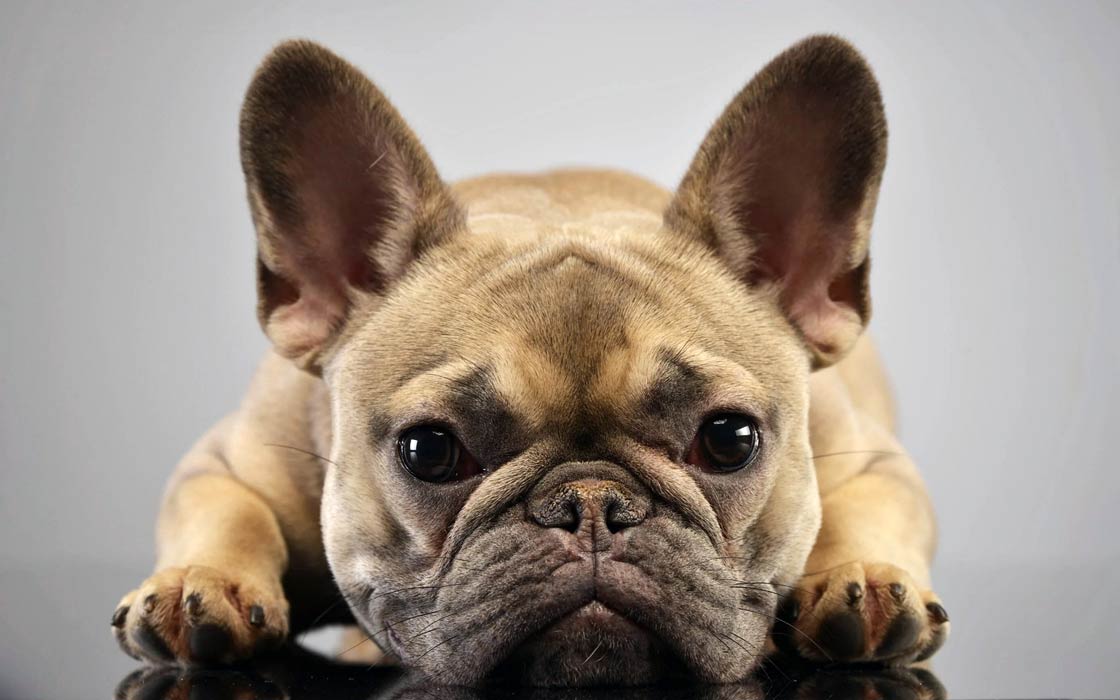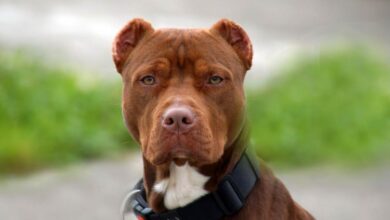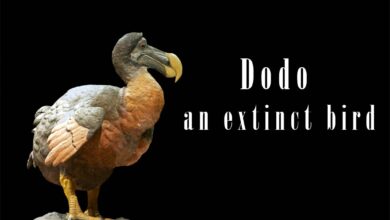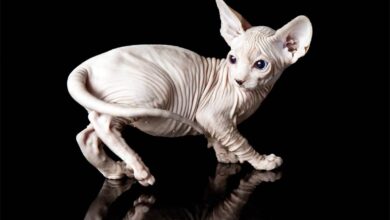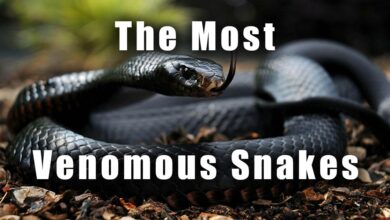The Rarest French Bulldog Color
French Bulldogs have exploded in popularity in the USA thanks to their compact, bat-eared charm and friendly temperaments. Their cute, smooshed faces and big personalities make them irresistible city and suburban pets alike. But part of their appeal is also visual – Frenchies come in a wide spectrum of coat colors, and that rainbow of rare shades has turned many owners into enthusiasts of exotic French Bulldog colors. In this post, we’ll look at the rarest Frenchie coat color and explain why they’re so special.
What Are Rare Frenchie Coat Colors?
Below is an overview of the most uncommon French Bulldog coat colors. Each of these traits comes from special genetics that ordinary Frenchies don’t carry:
1. Blue French Bulldog
A “blue” Frenchie has a dilute black coat that appears gray or bluish-gray. This color comes from the dilute (D) gene. It’s a black pigment that’s carried as a recessive allele, so two copies (d/d) are needed to show the color.
Blue Frenchies are eye-catching and very rare, often commanding $4,500–$7,000 or more. A top-quality blue puppy with champion bloodlines can sell for up to $10,000. Be aware that dilute coats can sometimes be linked to color dilution alopecia, although healthy breeding can minimize this risk.
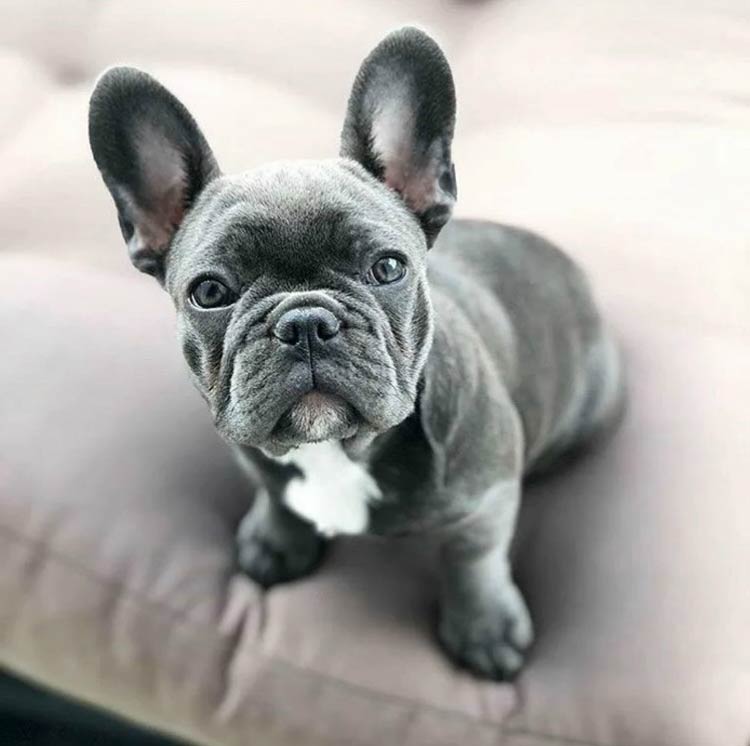
2. Lilac French Bulldog
Lilac Frenchies have a pale lavender-gray coat that is even rarer. Genetically, a lilac Frenchie carries both the blue (d/d) gene and two copies of the cocoa (co/co) gene.
Lilac Frenchie has a diluted chocolate color: two recessive brown genes and two dilutes. This combo creates that silvery-lilac hue. Lilacs are typically $4,200+ in the U.S. and often closer to $5,000 or more depending on breeding. They can also have blue or amber eyes, adding to their exotic look.
3. Chocolate (Brown) French Bulldog
Chocolate Frenchies are a rich brown color, caused by two recessive B genes (b/b or co/co depending on test) that dilute black to brown. True chocolate (co/co) Frenchies often have golden or light eyes. They’re rare (most Frenchies are black/masked or fawn) but not as extreme as lilac or isabella.
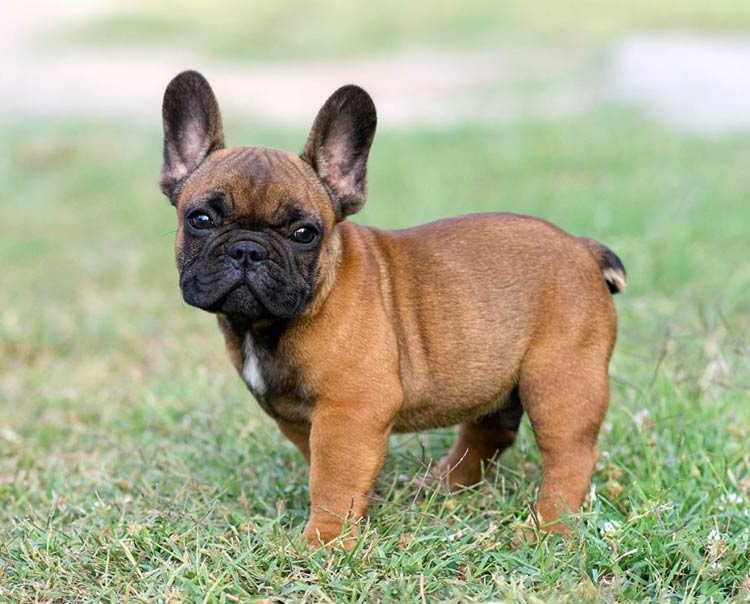
4. Platinum French Bulldog
Platinum Frenchies are very pale, almost white-cream. This shade comes from multiple dilution genes at once – typically the cream gene (e/e) on top of blue/lilac genes. For example, an Isabella platinum has b/b + d/d + e/e, and a Lilac platinum has co/co + d/d + e/e. The result is a near-white coat with light eyes and a pink nose.
Platinum Frenchies are extremely rare and prized. Their price ranges from $4,000 up (pet only), and in general one can expect four-digit prices (often over $6K) due to the complex genetics.
5. Isabella (Lavender) French Bulldog
Often considered the rarest Frenchie color of all, Isabella Frenchies have a light lilac or pale fawn coat with a pinkish nose. This color comes from two double recessives: the dog must carry two copies of the brown gene (bb) AND two copies of the dilute gene (dd).
In other words, an Isabella is essentially a diluted chocolate. Breeders note that both parents must carry the dilute and brown genes for an Isabella to appear.
The name “Isabella” comes from a delicate gray-lilac shade. The story goes back to a pale color associated with Spanish royalty. Because this combo is so rare, Isabella pups are highly coveted and often the most expensive color. Many breeders treat Isabella as a special category of lilac. Pricing info is scarce, but expect it to be in the same high range – often $5K or more – as other top rare Frenchie colors.
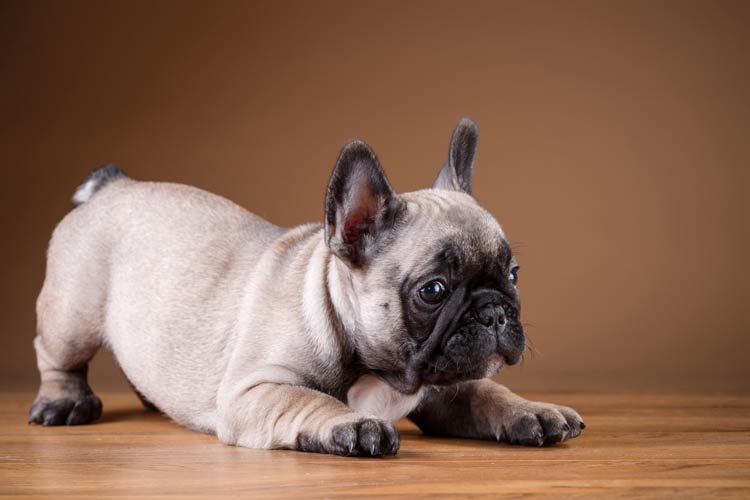
6. Merle French Bulldog
Merle is a pattern rather than a base color. Merle Frenchies have a marbled or mottled coat, with patches of diluted pigment and pink skin showing through. It’s caused by the Merle (M) gene, which is an incompletely dominant trait.
One copy of the M gene (m/M) produces the merle effect. Unlike recessive traits, a single merle gene from one parent will make the puppy merle. Merles can appear in various colors (blue merle, lilac merle, fawn merle, etc.), each with unique patches. Every merle Frenchie is different, which is part of the appeal.
Merle French Bulldogs require careful breeding. If two merle dogs are bred together, there’s a chance of producing double-merle pups (M/M). Double merles are very light or mostly white and are at high risk of serious health problems like deafness and eye defects. For this reason, reputable breeders usually avoid merle×merle matings.
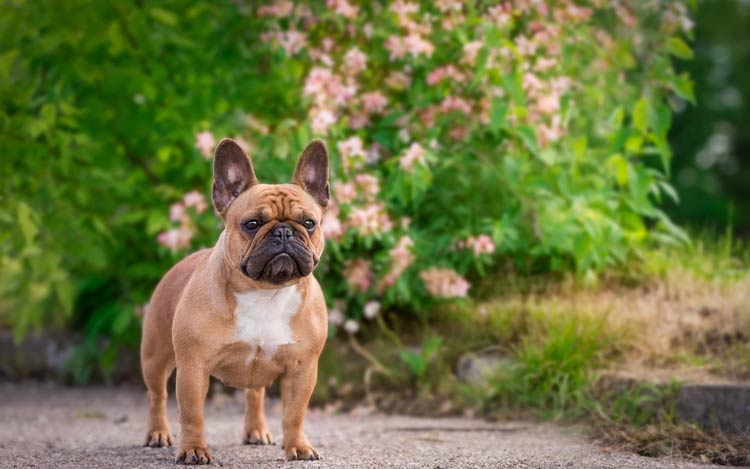
7. Fluffy (Long-Haired) French Bulldog
Strictly speaking, “fluffy” isn’t a coat color but a trait: some Frenchies carry a recessive gene for a longer, double coat. Fluffy Frenchies have 2–3× the fur of normal Frenchies, with tufts behind the ears and on the tail.
This long-hair gene (ff) is quite rare in Frenchies. Fluffy Frenchies can come in any color or pattern (blue, merle, cream, etc.), so they’re often called exotic Frenchies when combined with a rare color.
Breeders note that the longhair gene itself doesn’t introduce new health problems. In other words, a fluffy Frenchie faces the same risks as any Frenchie (brachycephalic issues, skin sensitivities, etc. below), not extra ones from its coat.
AKC will register long-haired pups, but they’re not standard. Because of their novelty, fluffy Frenchies also fetch higher prices. Their prices often reach several thousand dollars!
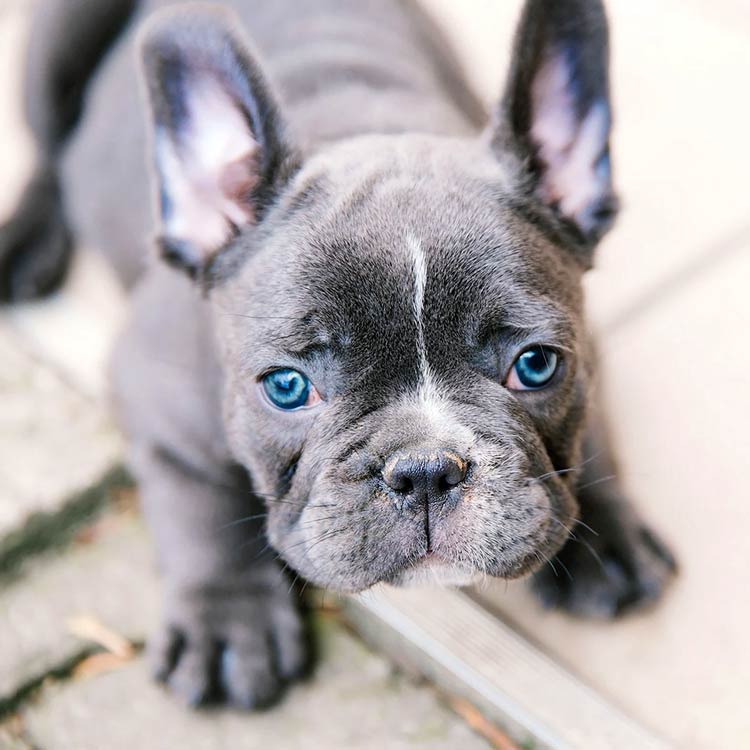
Which Color is the Rarest French Bulldog Color?
Among all these, Isabella is often cited as the single rarest color. It requires that special double-dilution combination, something that only a tiny fraction of dogs carry.
Practically, every Isabella Frenchie pup is a special case. Breeders say both parents must carry the ‘dilute’ gene (and the brown gene) to produce one.
This genetic hurdle means litters with Isabella puppies are extremely unusual. Even platinum (cream dilution) and merle colors, while rare, are not quite as genetically restrictive. Therefore, most experts and breeders agree that Isabella is the rarest French bulldog color.

Health and Care for Rare Frenchies
Keep in mind, rare colors can come with extra health considerations. The biggest concerns are often tied to the genes that cause the color:
- Double Merle Risks
Merle is the major one: if two merle Frenchies mate, some puppies get two copies of the merle gene (double merles). These pups have very little pigment in eyes and ears and almost always have deafness and serious eye defects. Even single-merle dogs should have their eyes and hearing checked. - Dilute Coat Issues
Blue and lilac colors involve the dilute gene. Dilute coats can sometimes suffer from Color Dilution Alopecia (CDA), where patches of the coat thin or lose color. A well-bred blue or lilac Frenchie may never show this, but it’s a risk some breeders mention. On the plus side, dilute Frenchies often have lighter eyes and nails. - General Frenchie Health
Apart from color, remember that all French Bulldogs share certain breed-wide issues. They are brachycephalic (flat-faced), so they’re prone to breathing difficulties and overheating. They also commonly have spinal problems like intervertebral disc disease (IVDD) and hip dysplasia. Wrinkles and skin folds can make Frenchies prone to dermatitis and infections. To help prevent these issues, we recommend checking out the health and care products from Frenchie Space Shop. Their items are carefully designed to suit the sensitive skin of rare Frenchies.
These health problems affect standard and rare Frenchies equally. Rare-colored dogs are not inherently less healthy because of their color genes (for example, the fluffy long-coat gene itself doesn’t cause issues). However, some breeders warningly note that people chasing rare traits sometimes overlook overall health. Always choose a responsible breeder who tests parents for hips, hearts, and other genetic conditions.
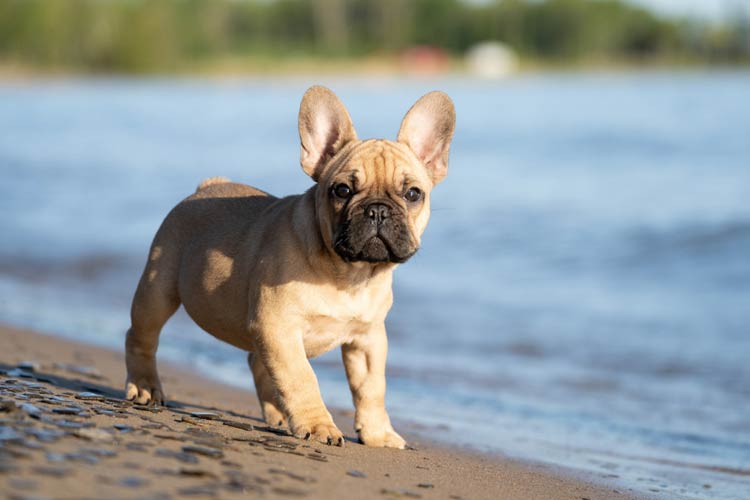
Pricing of Rare French Bulldogs
Exotic Frenchies come at a premium. In the USA, average French Bulldogs from reputable breeders cost roughly $3,000–$5,000, but price varies a lot. Rare colors push the cost higher.
A pet-quality blue or lilac puppy often sells for $4K–$7K or more. An Isabella or platinum pup can easily be in that range or higher, since breeders consider them extra-special. Merle Frenchies typically fetch $4,500–$6,000, with eye-catching pedigrees climbing beyond that.
Therefore, it’s not just color. High-demand traits such as blue eyes, pink noses and distinctive marks also affect the price. But broadly speaking, expect standard fawn/cream pups around $3K–$4K, and rare/exotic pups nearer the $6K+ end.
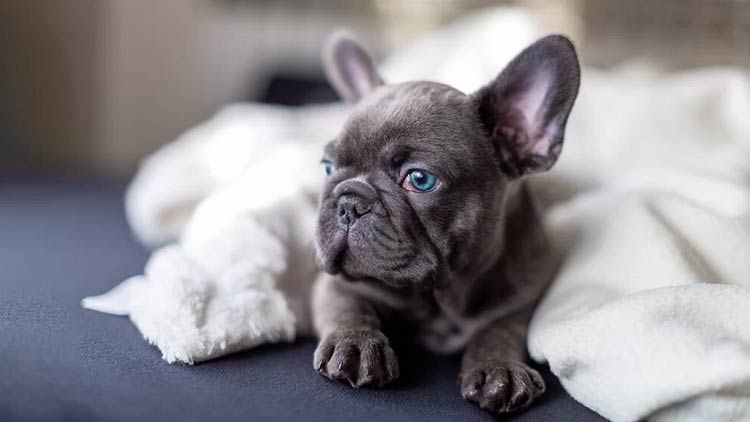
Finding the Rarest French Bulldog Color: Wrapping Up
Rarest Frenchie colors mean rare genetics – and a rare wallet hit. If a breeder offers a “blue,” “merle,” or “lavender” Frenchie for only $1,000–$2,000, it’s usually too good to be true. Be wary of scams or hidden health problems. Always verify the puppy’s lineage and the health testing of its parents. A healthy, well-bred exotic Frenchie puppy will often command a high price.
Choosing a rare-colored Frenchie should be about more than looks. The allure of a rare Frenchie color is real, but it’s best paired with a breeder who prioritizes health above all. With the right care, a rare-colored French Bulldog can be a stunning, healthy companion, and a unique member of your family.

